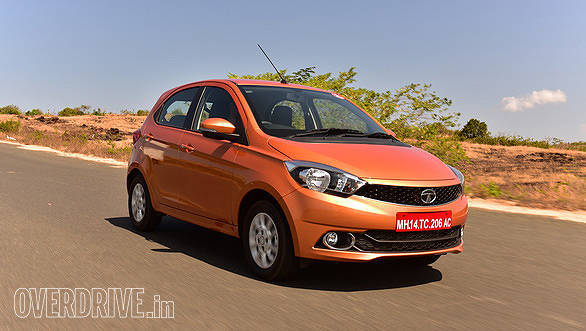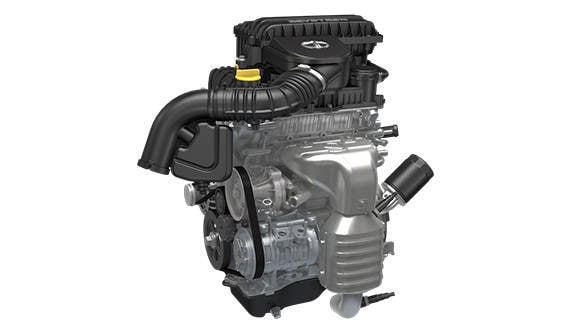Tata Tiago (Zica): Details of the petrol and diesel engines
The Tata Tiago, earlier known as the Tata Zica, is set to be launched by end of March 2016 and Tata Motors have left no stone unturned to ensure that the new small car has the right weapons in its arsenal to take on formidable competition. While the first drive review gave us an overview of the Tiago, we've chalked out comprehensive details of the petrol and diesel engines that will power the new Tata hatchback.
The petrol motor is based on the 1.2-litre Revotron engine that debuted in the Zest compact sedan and Bolt hatchback. The 1.05-litre diesel mill is brand new and has been developed in house by Tata Motors.

1.2-litre Revotron (petrol):
The Revotron engine was first developed as a turbocharged four-cylinder multi-point fuel injected petrol engine for the Zest and Bolt. For the Tiago (Zica), however, given the demands of the segment, a more fuel efficient mill was needed. The solution was to downsize the engine, lop off one cylinder without altering the displacement and inherent character. How do you manage to retain the displacement? Simply increase cylinder volume by altering bore and stroke. In the case of the Tiago, the bore stroke has been upped to 77mmx85.8mm (the four-cylinder Revotron has a bore stroke config of 75mm x67.5mm).

The other advantage this engine provides is packaging. With a smaller engine, Tata Motors could properly utilise the space available in the engine bay of a compact hatchback. Tata Motors could also achieve the packaging solutions since this Revotron is naturally aspirated, unlike the turbocharged unit in the Zest. This three-cylinder engine with a four-valve per cylinder valvetrain also has variable cam timing and internal exhaust gas recirculation, both of which help in managing power and efficiency driving cycles. Weight was another area that Tata Motors worked on diligently and the lightweight design achieved by using an all-aluminium construction and several low friction performance technologies has helped achieve critical refinement and efficiency goals.
This engine also provides the multi-drive feature seen in the Zest but unlike that car, the Tiago (Zica) has just two modes. A City and Eco mode allow drivers to choose between a more efficient and economical driving character or more power and linearity.
The Revotron 1.2 has a hydraulic lash adjustor, a durable chain-drive and an auto-tensioner to enhance the life of the engine and reduce maintenance costs. This engine, Tata Motors claims, is already BS V and BSVI compliant.
1.05- litre Revotorq:The Revotorq diesel, also developed indigenously by Tata Motors, is an all-new three-cylinder diesel engine with a four-valve per cylinder valvetrain. This 1,047cc diesel offers 70PS of max power but has a class leading 140Nm of max torque. Future ready to meet any fuel efficiency requirements and comply with BS V and VI norms, this engine envelops class leading technologies and state of the art functions to enhance refinement and efficiency.
The engine construction uses a stiffened cast iron block with an aluminium cylinder head, plastic isolate cylinder head cover and a sandwich-style steel construction oil sump with a balancer shaft to lower NVH. With a DOHC four-valve layout, centralised injectors on a common rail running 1,600 bar fuel pressures, optimised valve lift and low friction cranktrain, the idea was to maximise fuel efficiency. New low inertia friction piston and ring pack further enable consumption reduction. While figures haven't been released yet, Tata Motors claim that fuel efficiency would be best in class. The dual overhead cam unit features low friction High Lift Actuators( HLA) and Roller Finger Follower (RFF) valve actuation.
A lightweight fixed geometry turbocharger and electronically controlled throttle body further optimise the combustion process. Alongside, an optimised compression ratio (16.5:1) enables the engine to provide a flatter torque curve and therefore better driveability. For future requirements, a variable geometry turbocharger can be employed to extract better power and efficiency ratings.
This diesel also comes with the dual driving modes like its petrol counterpart. Both City and Eco modes are controlled by a more efficient engine management system developed in conjunction with Bosch.
To offset the vibrations setup by just having a three cylinder configuration, a balancer shaft is utilised to reduce vibrations and offer smoother operation. The timing belt and auxiliary belt life has also increased by using auto-tensioners for the front end accessory drive (FEAD) system. Oil and fuel filter change intervals have also grown longer to reduce the overall cost of ownership.
More from OVERDRIVE on the new Tata Tiago (Zica):
Video: Tata Zica first drive review
Tata Zica first drive review (India)
Tata Zica features and specifications revealed
Image gallery: We drive the Tata Zica hatchback
Five things you'll like about the Tata Zica and two things that could have been better
.